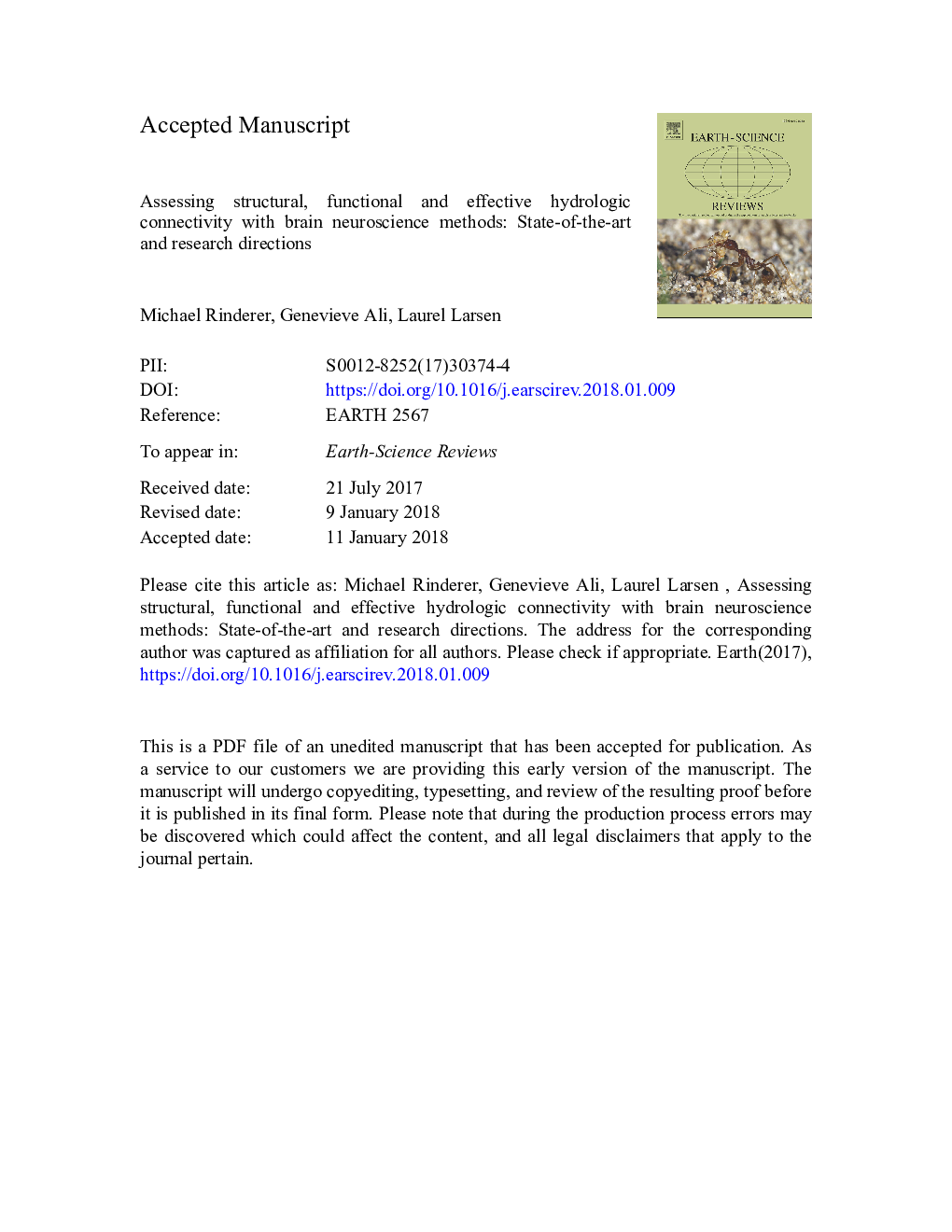| کد مقاله | کد نشریه | سال انتشار | مقاله انگلیسی | نسخه تمام متن |
|---|---|---|---|---|
| 8912998 | 1639924 | 2018 | 70 صفحه PDF | دانلود رایگان |
عنوان انگلیسی مقاله ISI
Assessing structural, functional and effective hydrologic connectivity with brain neuroscience methods: State-of-the-art and research directions
ترجمه فارسی عنوان
بررسی سازگاری ساختاری، کاربردی و موثر هیدرولوژیکی با روش های مغز اعصاب مغز: مسیرهای پیشرفته و پژوهشی
دانلود مقاله + سفارش ترجمه
دانلود مقاله ISI انگلیسی
رایگان برای ایرانیان
کلمات کلیدی
اتصال هیدرولوژی، علوم اعصاب، اتصال سازمانی، تجزیه و تحلیل فاصله اتصال به عملکرد ارتباط موثر
موضوعات مرتبط
مهندسی و علوم پایه
علوم زمین و سیارات
زمین شناسی
چکیده انگلیسی
While the concept of connectivity has gained popularity in fields like hydrology and ecology, little agreement exists on its definition, which hinders its use in both scientific and legal contexts. In contrast, neuroscientists have developed not only strong conceptualizations of connectivity but also tools to quantify it: a clear distinction is made between structural connectivity, which is determined from brain anatomy; functional connectivity, which is estimated based on statistical dependencies between neuronal electric timeseries; and effective connectivity, which infers causal relations from the same timeseries based on the assumption that “true” interactions occur with a certain time delay. The motivation of this review arose from the hypothesis that connectivity-related statistical techniques, which are applied to timeseries of electrical currents measured by placing electrodes on the scalp of the human brain, could also apply to high-frequency hydrological timeseries acquired to characterize catchment response to precipitation. Here we bring together existing conceptualizations of structural, functional and effective connectivity in hydrology and ecology and compare them with those used in brain neuroscience. We then summarize the most important brain connectivity measures and their associated mathematical frameworks before evaluating the potential of those measures to help advance our understanding of hydrologic connectivity properties - in terms of the frequency, magnitude, timing, duration and rate of water movement linking two disparate locations. Lastly, we present a short case study where a selection of brain connectivity measures is applied to 35 groundwater and streamflow timeseries from a Swiss catchment to infer subsurface flow-driven hydrologic connectivity. Our literature review combined with our short case study suggest that an ensemble of functional and effective connectivity measures should be used and constrained not only by structural connectivity measures but also by interpretation thresholds in order to make results parsimonious. We highlight challenges associated with transferring brain connectivity measures to hydrology, especially those related to choosing the appropriate length and sampling frequency of input timeseries when assessing perennial versus ephemeral connectivity, appropriately detecting and differentiating noisy from indirect connections, and interpreting unbounded connectivity measures. We then offer recommendations for future research and propose that hydrologists use a common classification system encompassing all potential connectivity assessment approaches and measures in order to facilitate scientific communication.
ناشر
Database: Elsevier - ScienceDirect (ساینس دایرکت)
Journal: Earth-Science Reviews - Volume 178, March 2018, Pages 29-47
Journal: Earth-Science Reviews - Volume 178, March 2018, Pages 29-47
نویسندگان
Michael Rinderer, Genevieve Ali, Laurel G. Larsen,
